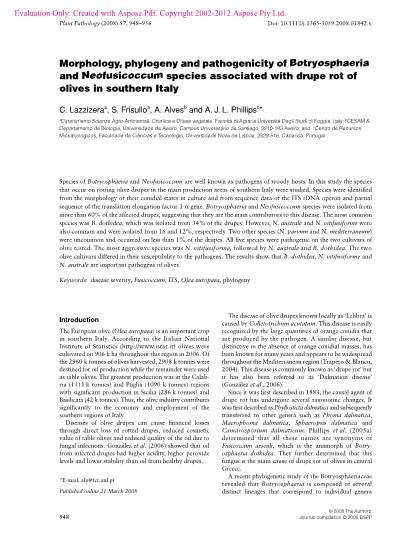
Morphology, phylogeny and pathogenicity of Botryosphaeria and Neofusicoccum species associated with drupe rot of olives in southern Italy
Species of Botryosphaeria and Neofusicoccum are well known as pathogens of woody hosts. In this study the species that occur on rotting olive drupes in the main production areas of southern Italy were studied. Species were identified from the morphology of their conidial states in culture and from sequence data of the ITS rDNA operon and partial sequence of the translation elongation factor 1- α gene. Botryosphaeria and Neofusicoccum species were isolated from more than 60% of the affected drupes, suggesting that they are the main contributors to this disease. The most common species was B. dothidea, which was isolated from 34% of the drupes. However, N. australe and N. vitifusiforme were also common and were isolated from 16 and 12%, respectively. Two other species (N. parvum and N. mediterraneum) were uncommon and occurred on less than 1% of the drupes. All five species were pathogenic on the two cultivars of olive tested. The most aggressive species was N. vitifusiforme, followed
Magnífico trabajo orientado a la taxonomía de las especies fúngicas asociadas a enfermedades de la aceituna, Botryosphaeria spp y Neofusiccocum spp. mediante técnicas moleculares y morfometrías. La publicación contiene buenas fotografías microscópicas de las especies estudiadas.
